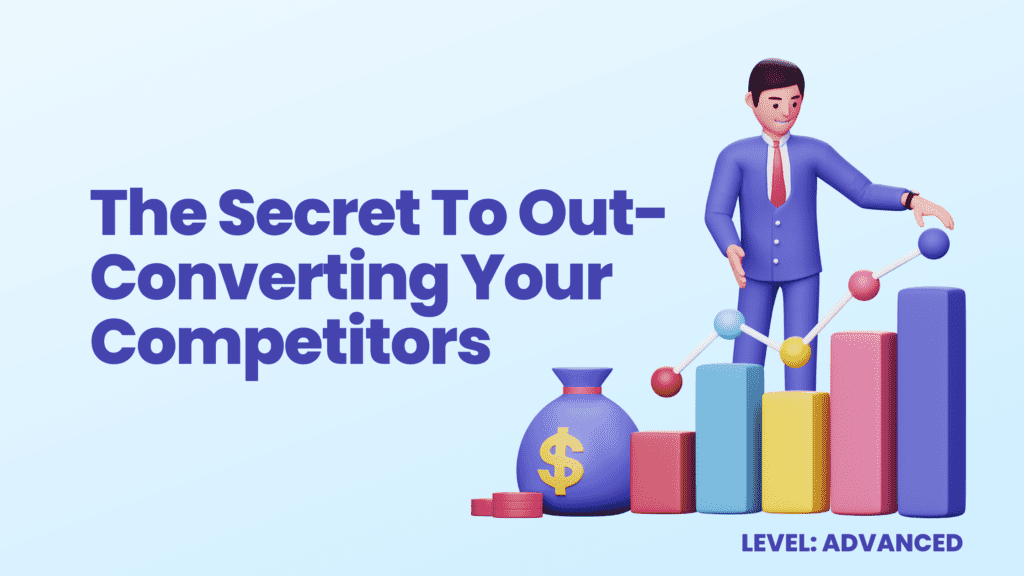“ABT” Always Be Testing
If you’re selling products on Amazon, chances are you wear many hats. You’re likely a CEO, marketer, customer service rep, and so much more.
Regardless of whether you are taking on scaling a band alone or you have a team behind you, one of the most crucial elements to growing is getting the marketing right. While there are many strategies, tactics, and philosophies that you can implement to increase sales on Amazon, there is one basic tenet that all marketers in all niches live by that assures the ability to increase profits:
A.B.T.
Always Be Testing!
But what does that mean, exactly?

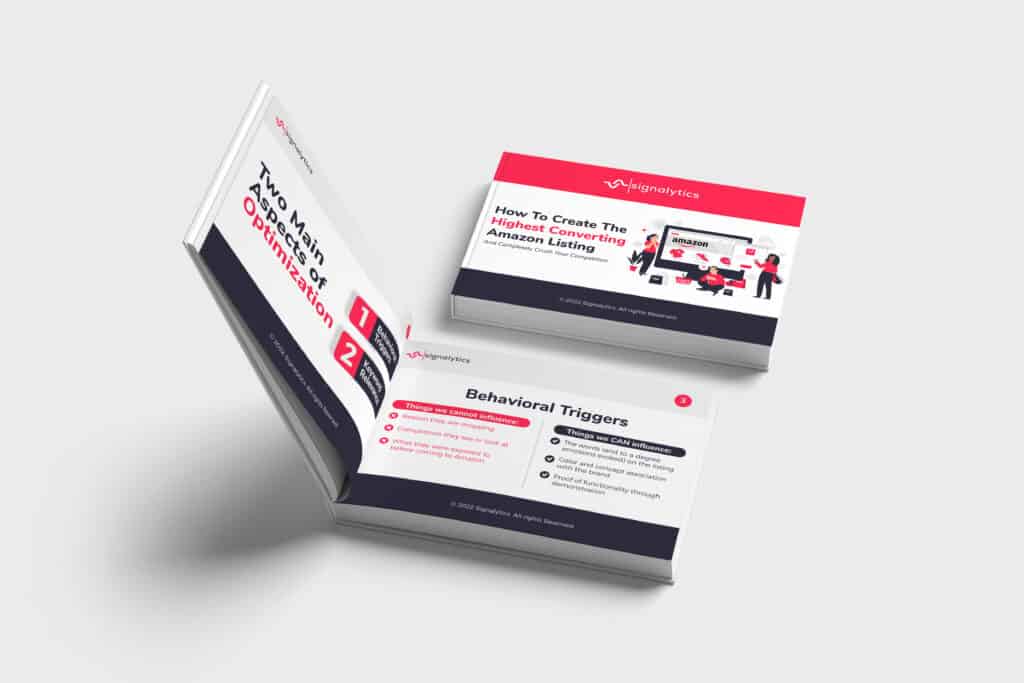
Get Our Internal Amazon Listing Optimization Operating System and increase conversions by 18%+ HERE 👇
A/B Testing Is the Game Changer
When someone mentions testing in the context of marketing they are usually referring to “split testing” or “A/B testing.” A/B testing is the act of presenting to a buying audience two different pieces of marketing material and recording which one leads to higher conversions.
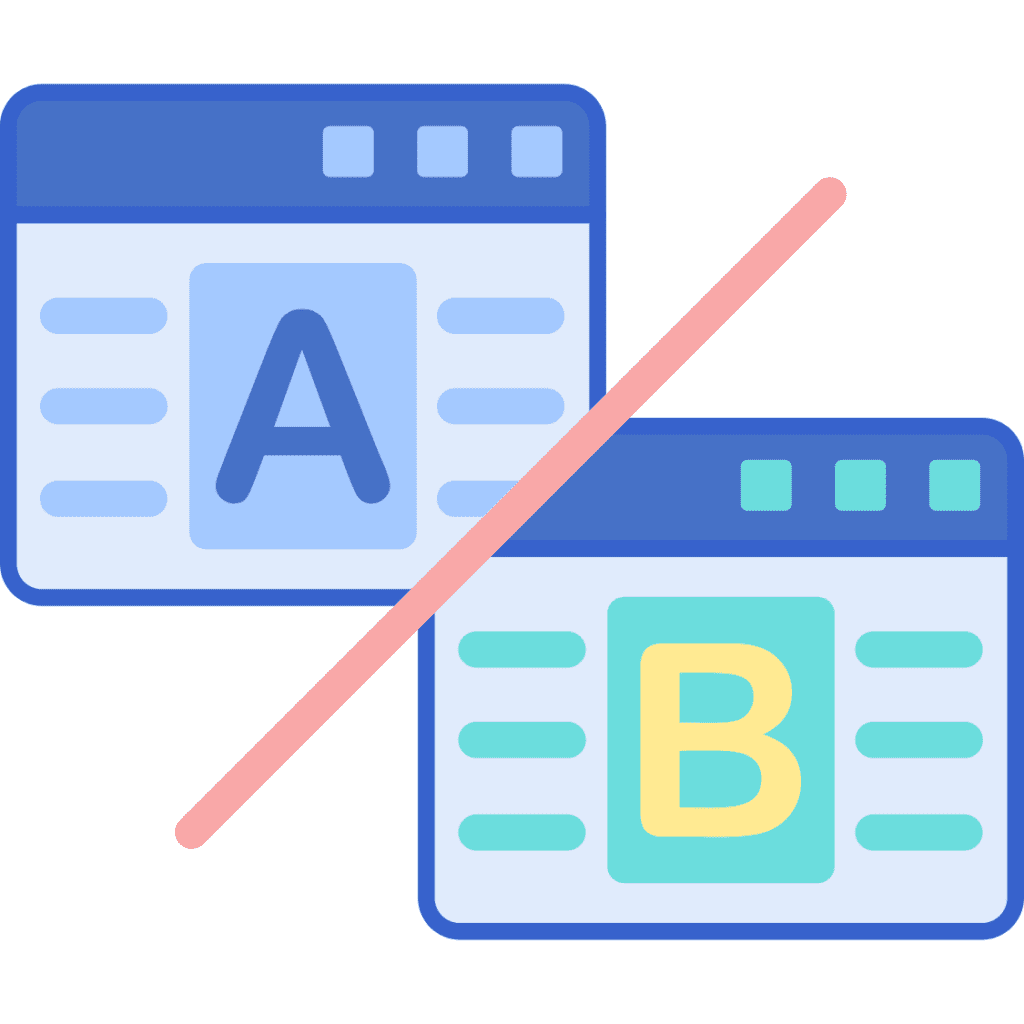
These “marketing materials” can be:
- Ad copy
- Ad imagery
- A listing title
- Listing imagery
- A sales page title
- An email subject line
- Etc
How this has become a game changer for marketers is; it allows constant optimization on every aspect of an offer.
Think about it. Your offer presentation can always be better. A/B testing allows you to prove that by consistently testing until you’ve maximized conversions and it seems that your presentation can’t get any better anymore. It’s the straightest path to total optimization.
Why Is Testing Important?
What’s interesting (insane maybe) is that despite A/B testing being such a clear path to optimizing and therefore maximizing conversion rates on all fronts, so many brands simply don’t employ it.
Why?
Perhaps they don’t see its importance. The truth is, maximizing conversion rates is critically important to the growth and success of an online brand. First, let’s address a point of contention…
Traffic vs Conversions
This is an age-old argument. Which is more important; more traffic or more conversions?
Let’s break down the argument. Let’s pretend you have a 12% conversion rate (extremely high for a Shopify page but somewhat average on Amazon). This conversion rate represents actual purchases.
Now let’s say you get 500 sessions per month. That means this product makes 60 sales per month.
If you were able to increase the number of sessions to 1000 per month, then with the same conversion rate your sales would double. This is why some marketers believe traffic is more important than conversions.
Here’s the thing. In the above example, the assumption was that the conversion rate would remain the same. However, this isn’t necessarily always the case.
See, more traffic doesn’t guarantee more sales. BUT, higher conversion rates ALWAYS means more sales.
With traffic there is also the concern of whether it is relevant, or whether there is purchase intent, and a lot of other factors that may not mean sales will take place. With conversions, the higher they go, the more money you are making. Every. Single. Time.
And this is why testing is so important. So that, regardless of your traffic and advertising efforts, you are always maximizing the results you get from the people that do see your offer.
Introducing Amazon Experiments
Since marketers and brand owners are becoming aware that A/B testing is necessary for optimal growth, and Amazon already knows this (they A/B test things all the time and have for years), the platform finally decided to extend this feature to brand owners.
As part of their suite of Brand Registry features, Amazon introduced Experiments in 2019. Officially titled “Manage Your Experiments” this is Amazon’s A/B testing capabilities for product listings.
How Do Experiments Work?
Without going into detail about how to set up an experiment (there is more than enough information about that online), let’s talk about exactly what they do and how they work.
Amazon Experiments lets you A/B test one of three listing elements:
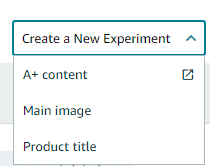
- Title
- Main Image
- A+ Content
While your experiment is running Amazon shows a version of your listing to two audiences, effectively splitting the traffic. People in one audience segment, shown one version of the listing, will see that version no matter where it shows up (ads, other featured sections, on competitor pages, etc).
When the experiment time has elapsed, you’re then given the stats on the performance of each of your listing versions.
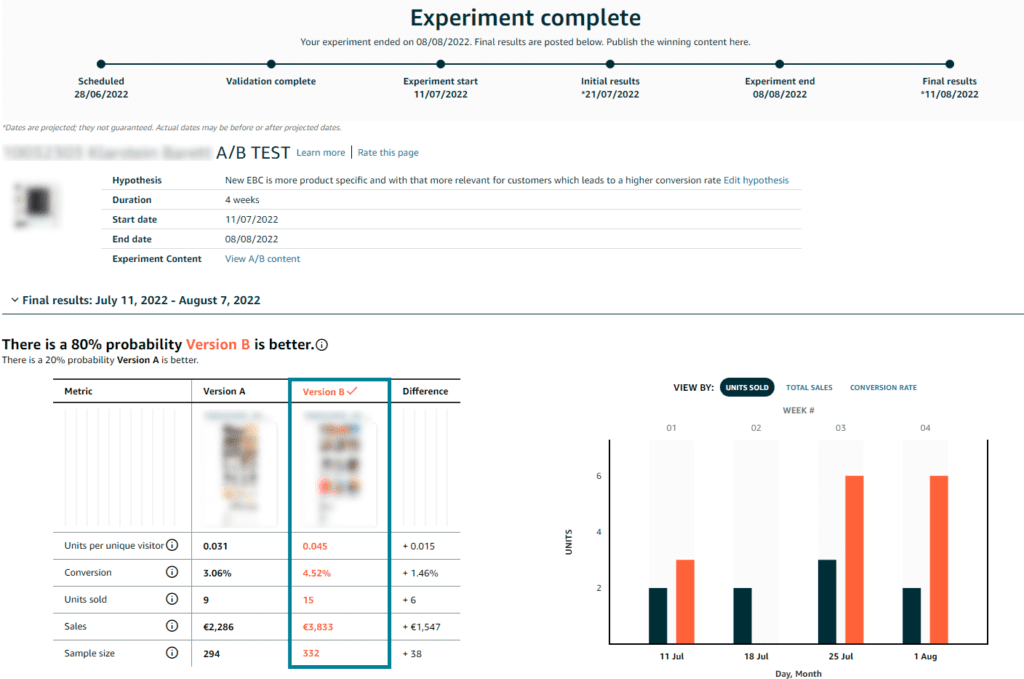
From there you can change your listing to permanently reflect the experimental versions that resulted in the highest number of sales.
What Can These Tests Do For Your Business?
The obvious benefit to utilizing this functionality is that you end up with higher converting listings. This means more sales, and ideally more profits in your pockets.
However, another powerful benefit is the forecasting element from the “Potential One-Year Impact Estimate.”

With this metric you can not only see Amazon’s internal forecasts of the impact on increasing conversions (very telling on how customer sentiments change over the course of a year) but also you can better plan marketing implementation in the future.
Forecasting is a powerful activity for any business and will help future planning immensely.
But If I Pay To Have My Listing Optimized, Why Do I Need A/B Tests?
This is a common question, and it is a legitimate one. If you paid to have the best agency implement the best changes to your listing, how will A/B testing help? After all, anything you test against the agency’s top-notch content will likely fail, as expected, right?
Here’s the thing…a lot of agencies feel this way too. They think since they are diving deep into your brand, putting their best foot forward, running an experiment would only undermine their work. It would show neither you, nor they, have confidence in the work they’ve submitted to you.
This is completely wrong-headed and comes from a place of arrogance.
Yes, you could have the most skilled optimizers in the business optimize your listing. You could even have behavioral economists consulting on these optimizations. And still, it would be good to A/B test.
Why?
Because it is impossible to predict with any reliable accuracy the actions of other people.
Sure past results can inform us of probable aggregate outcomes. But there is no way to predict on an individual level how people might react to your branding, your color schemes, your imagery, or even the word order in your listing.
There is also no way to predict what audience Amazon shows the listing to. We already know Amazon controls traffic to listings, based on things like keyword relevance, geo-location, and even disciplinary flags. So we have no idea what segment of the population they are going to decide your listing is visible to at any given time.
Due to these unknowns, it is arrogant to assume that anyone, even the brand creator, will be able to perfectly communicate the message of that listing to anyone who views it.
That is why A/B tests are always valuable. They can validate what you already knew, or they can prove you wrong. And both of those scenarios are worth something to a brand owner.
How To Maximize Amazon Experiments
First step in making Amazon Experiments work for you is to actually use them.
Whenever you optimize a listing or create a new one, be sure to think about all types of customers that may benefit from your product. Then, from that perspective, come up with alternative Titles and A+ Content. Also, create different main images that show the product at differing angles or facing different directions.
- For the Title, consider changing the order of words, or perhaps focusing on a completely different key phrase.
- For the A+ content, consider telling a story about your brand that appeals to different segments of your niche. Focus on different benefits that will speak to different types of customers.
- For main image, play with angles, facing directions, and including the packaging or not.
Then, run an experiment on the listing, one element at a time. Run each experiment for the minimum timeframe of 4 weeks. So that’s; 4 weeks Title experiment, 4 weeks main image experiment, and 4 weeks A+ experiment. This will take a total of just under three months.
At the conclusion of the first three months you’ll have a strong listing. It’s not a bad idea to continue to test different ideas every so often either, as optimization is on-going so long as there are improvements that can be made.
Also remember to utilize the projected yearly impact estimate to update your forecasts.
Save Time and Effort With Word-Class Optimization
Alternatively you can entrust listing creation and optimization to us at Signalytics. We offer complete optimization services, including creating alternative versions of elements and testing them with Experiments.
At Signalytics we understand that even our best work can be improved upon, and since we take a data-first approach, we know no assertion can be concluded until data supports it. With a top-tier team of designers, writers, and leadership with decades of experience, Signalytics can undoubtedly help you scale your brand through stellar listing optimization.

